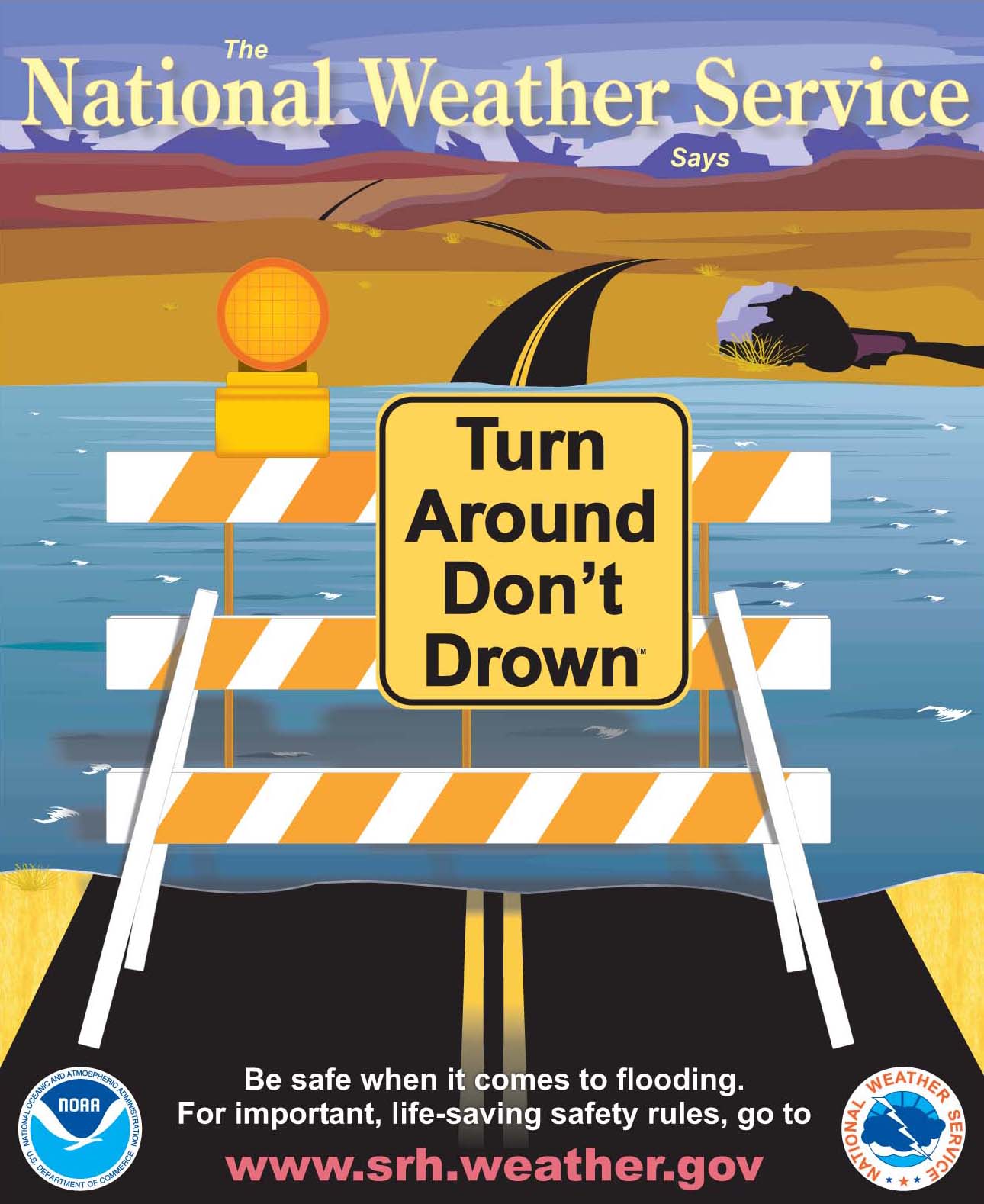Are You Prepared For A Flash Flood Emergency? A Safety Checklist

Table of Contents
Understanding Flash Flood Risks
Flash flood risk assessment is the first step in effective flood preparedness. Knowing your vulnerability is key to protecting yourself and your family.
Identifying High-Risk Areas
Geographical location plays a significant role in flash flood risk. Areas near mountains, canyons, dry washes, and those with steep slopes and inadequate drainage systems are particularly vulnerable. Identifying these high-risk areas is crucial for proactive flood safety measures.
- Examples of high-risk areas: Areas with steep terrain, canyons, deserts with dry washes, riverbeds, and areas with poor drainage.
- Resources for checking flood risk: FEMA flood maps (www.floodmaps.fema.gov), local weather services (National Weather Service), and your local government's emergency management agency.
Understanding why these areas are high-risk is essential. Steep slopes allow water to accumulate and rush downhill rapidly, while inadequate drainage systems cannot handle sudden surges in rainfall, leading to rapid flooding.
Recognizing Flash Flood Warning Signs
Recognizing the signs of an impending flash flood can be the difference between safety and danger. Staying informed and knowing what to look for is vital for flood survival.
- Heavy rainfall: Intense and persistent rainfall, especially in a short period.
- Rapidly rising water levels: Noticeable and quick increases in water levels in streams, rivers, or low-lying areas.
- Unusual cloud formations: Dark, ominous clouds often precede heavy rainfall and potential flash floods.
- Official warnings from weather services (NWS): Pay close attention to weather alerts and warnings issued by the National Weather Service or your local meteorological agency.
The urgency of these signs cannot be overstated. Immediate action is required upon observing any of these warning signs. Don't wait for the floodwaters to arrive – evacuate immediately if instructed by authorities.
Building Your Flash Flood Emergency Plan
Proactive planning is paramount to effective flood safety. A well-defined plan increases your chances of surviving a flash flood emergency.
Creating a Family Communication Plan
Establishing a communication strategy is vital in case family members become separated during a flash flood. This plan ensures everyone can reconnect safely.
- Designated meeting points: Select multiple, easily accessible meeting points at higher ground.
- Out-of-state contact person: Designate someone outside the affected area as a central contact point for all family members.
- Emergency contact information: Keep a readily accessible list of emergency contacts, including phone numbers and addresses.
An out-of-state contact person is crucial because they are less likely to be affected by the disaster and can coordinate communication amongst family members who may have lost contact due to power outages or network disruptions.
Assembling an Emergency Kit
Preparing a well-stocked emergency kit is a cornerstone of effective flood preparedness. This kit should contain essential supplies for survival.
- Water: Store at least one gallon of water per person per day for several days.
- Non-perishable food: Include easy-to-prepare, non-perishable foods like canned goods, energy bars, and dried fruits.
- First-aid kit: A comprehensive kit with essential medical supplies.
- Flashlight and extra batteries: For visibility and communication in power outages.
- Radio (battery-powered): To receive emergency alerts and weather updates.
- Medications: Pack a sufficient supply of any necessary prescription medications.
- Important documents (waterproof container): Store vital documents such as identification, insurance information, and medical records in a waterproof container.
- Cash: Credit card systems might be down during emergencies.
The quantity of items should be based on your family size and the potential duration of displacement.
Identifying Safe Evacuation Routes
Planning escape routes and safe locations beforehand is crucial for a swift and safe evacuation during a flash flood.
- Multiple escape routes: Identify at least two different evacuation routes to higher ground.
- Designated higher ground locations: Know the locations of safe shelters or higher ground areas within your community.
- Quickest routes to safety: Familiarize yourself with the quickest and safest routes to these locations.
Practice these routes regularly, especially with children, to ensure everyone knows the escape plan. Remember that road closures during a flood are common, so having alternate routes planned is vital.
Actions to Take During a Flash Flood Emergency
Knowing what to do during a flash flood emergency is crucial for survival. Your reaction time can be the difference between safety and peril.
Immediate Actions Upon Warning
Upon receiving a flash flood warning, immediate action is paramount. Delay can be deadly.
- Move to higher ground immediately: Evacuate immediately to higher ground if instructed by authorities.
- Avoid driving through flooded areas: Never attempt to drive through floodwaters; the depth might be deceptive and currents extremely strong.
- Do not attempt to cross flowing water: Even seemingly shallow water can sweep you away.
Floodwaters often contain hidden dangers, such as debris, downed power lines, and swift currents that can easily overcome even strong swimmers. Electrical hazards are also prevalent in floodwaters.
Protecting Your Property
While personal safety is paramount, taking steps to protect your property can help minimize the impact of a flash flood.
- Move valuables to higher levels: Move important documents, electronics, and other valuable items to upper floors or higher ground.
- Disconnect electrical appliances: Disconnect appliances to prevent electrical hazards.
- Secure outdoor objects: Secure or move loose items outside to prevent damage from floodwaters.
Preventing further damage once the floodwaters have subsided is also important. Inspect your property for structural damage and take necessary steps to prevent mold and mildew growth.
Conclusion
Flash floods are unpredictable and extremely dangerous. By understanding the risks, developing a comprehensive plan, and knowing what actions to take during an emergency, you can significantly increase your safety and protect your family. Don't wait until it's too late. Take action today to prepare for a flash flood emergency and create a personalized safety checklist. Remember, being prepared for a flash flood emergency is not just about survival; it's about ensuring the safety and well-being of yourself and your loved ones. Start building your flash flood emergency plan now!

Featured Posts
-
 The Symbolism Of Presidential Seals Contextualizing Luxury And Political Gatherings
May 26, 2025
The Symbolism Of Presidential Seals Contextualizing Luxury And Political Gatherings
May 26, 2025 -
 Elever Des Enfants Avec Un Grand Ecart D Age Le Temoignage De Melanie Thierry Et Raphael
May 26, 2025
Elever Des Enfants Avec Un Grand Ecart D Age Le Temoignage De Melanie Thierry Et Raphael
May 26, 2025 -
 Sg Wireless Strategic Partnerships Mitigating Supply Chain Risks For Oems
May 26, 2025
Sg Wireless Strategic Partnerships Mitigating Supply Chain Risks For Oems
May 26, 2025 -
 Michael Schumachers Ferrari A Piece Of F1 History Up For Auction In Monaco
May 26, 2025
Michael Schumachers Ferrari A Piece Of F1 History Up For Auction In Monaco
May 26, 2025 -
 Pogacars Tour Of Flanders Triumph A Masterclass In Solo Riding
May 26, 2025
Pogacars Tour Of Flanders Triumph A Masterclass In Solo Riding
May 26, 2025
